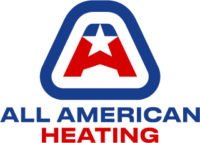Want a career that makes your heart sing? The trades might be the thing

Work smarter,
not harder.
Why Vocational Training and Jobs in the Trades Are the Paths to Success.
During or following high school, most people begin to plan how they will make a living after graduation. That might mean going on to college, enrolling in a trade school, or taking vocational training while still in high school. For anyone trying to decide what to do, here are some points that might shine a light on the value of a trade school or vocational training in the mechanical services field.
The downside of “traditional” college.

The cost of a four-year degree from a public college or university is now estimated at $103,456 over 4 years. Out-of-State students will pay on average, $43,721 per year or $174,885 over 4 years; traditional private university students pay $53,949 per year or $215,796 over 4 years. This is only for tuition and does not include room and board, books, and other expenses. For students that want to pursue careers that require advanced or post-graduate degrees, the costs continue to rise – and the number of jobs available continues to shrink.
With costs like these, it’s no surprise that about 34% of college students borrow money to pay for school. Interest rates on student loans are currently between 2.5% and 4.53%. Graduate loans are as high as 6.5%. What this means is, the odds of paying off student loans and gaining any kind of return on your investment for a four-year degree is at an all-time low.

The same is not true for trade schools.
By contrast, the estimated cost of an ENTIRE trade school education is about $33,000. In addition, most programs can be completed in two years or less. Trade school graduates can earn median salaries ranging from the $50,000s to upwards of $120,000/year over time — depending on the trade, itself.
What does this have to do with HVAC and plumbing?
The career outlook for jobs in the trades is strong. The kinds of work learned in trade or vocational programs like mechanical services, electrical, or plumbing often require great dexterity, mathematical, medical, scientific, or other skill sets. And they often turn out to be better options for people that don’t like to sit behind a desk. In the past, jobs where one worked with his hands or jumped in, feet first, to tackle a difficult, physical job, were considered “blue-collar.”

That trend is changing, as many millennials remain buried in student debt, and later generations are considering alternatives that will allow them to work in a field they enjoy, rather than one that pays well and brings prestige but causes internal strife.
The skills gap in mechanical services.

In addition, there is a growing chasm between the jobs available in industries like HVAC and plumbing, and the skilled laborers available to fill them. According to gopaschal.com, the industry suffers a net technician loss every year to retirement or career change, and more than 80,000 HVAC technician jobs across the country were unfilled as of June 2021. In a nutshell, there is an increasing shortage of plumbers, electricians, HVAC installers, and technicians, as well as other personnel with skills that can be
accessed with a trade school education. Demand for these positions is expected to grow up to another 16% by 2026. This presents opportunities for people who aren’t necessarily interested in college, want to start earning shortly after high school, or are even looking to change jobs mid-career. The earning potential in these fields is often on par with or even exceeds that of some careers requiring four-year degrees. And they can be reached with little to no debt, and in a shorter time.
Further, as technology continues to progress, more and more homeowners are looking to professionals to help maintain their homes’ systems. Older systems for which mechanical issues could once be solved by a trip to the hardware store are phasing out. More complex, energy-efficient, and smart systems are taking their place. And those systems need people who know how to work on them. Because the homeowners themselves can’t.

So, what’s the catch?

Because of these ongoing, technological innovations in the field, job seekers that choose vocational training should be aware that continuing education is necessary over the course of a career in HVAC, electrical, or plumbing. However, there are once again parallels with careers requiring a four-year degree. Like the constantly shifting environment in information technology, specialists in the mechanical trades need to be able to install, repair, and maintain newer systems to remain relevant in the field.
However, if a tradesperson can keep up with new training, their earning potential also continues to increase. Many employers offer or even require continuing training to move up the ladder. And many will pay for it.
What professions can you train for in trade schools?
Here are some of the career opportunities offered by trade or vocational school:
- Electrician
- HVAC/R Installer/Technician
- Computer Networking
- Culinary
- Massage Therapy
- Medical Assistant
- Nursing
- Pharmacy Technician
- Plumbing
- Welding

Preparing for a job in the trades.

Wondering where to start? Many trade schools offer online programs that can be completed from the comfort and safety of home. Schools offering vocational programs that can be completed in two years or less often offer rolling applications, which means prospective students can apply any time. They also usually have several different start dates throughout the year, which means new students don’t have to wait to enroll.
To qualify for financial aid, those interested will still need to fill out the FAFSA, and work with financial counselors at the school of their choice to determine their eligibility and apply for scholarships and other aid. Federal student aid is only available for students that attend accredited schools.

